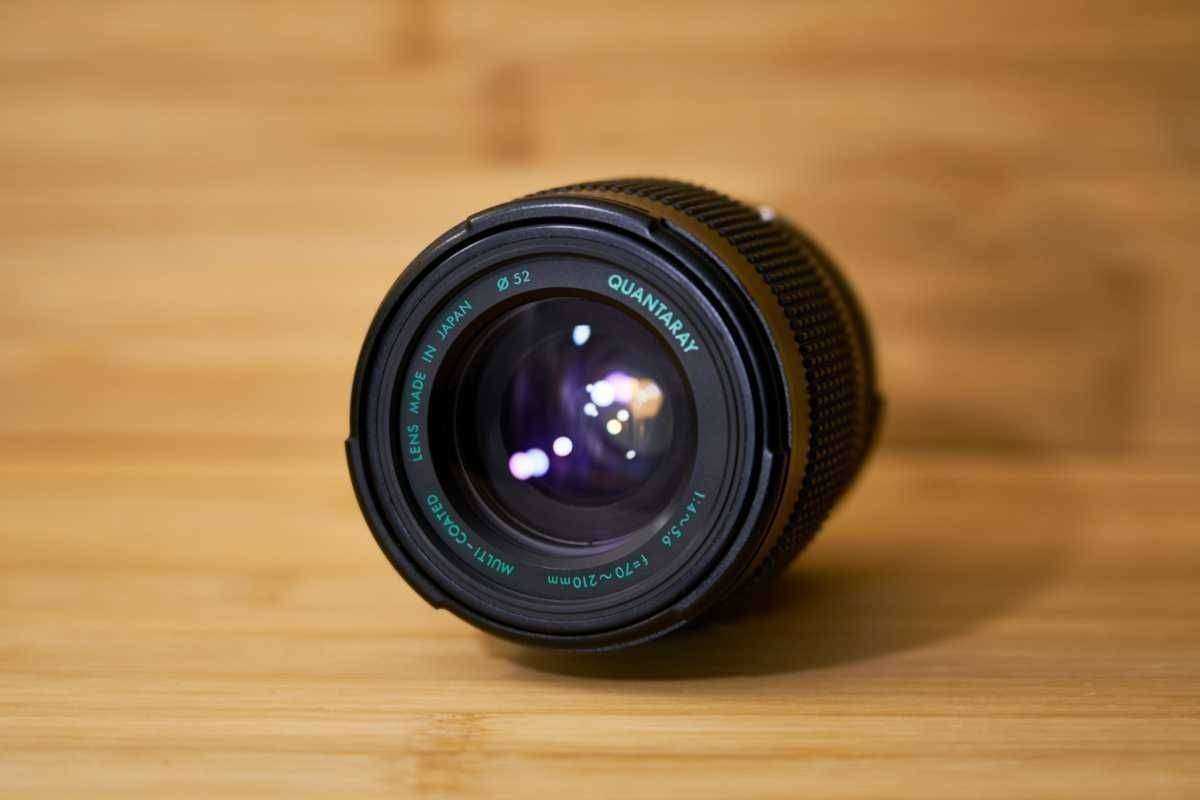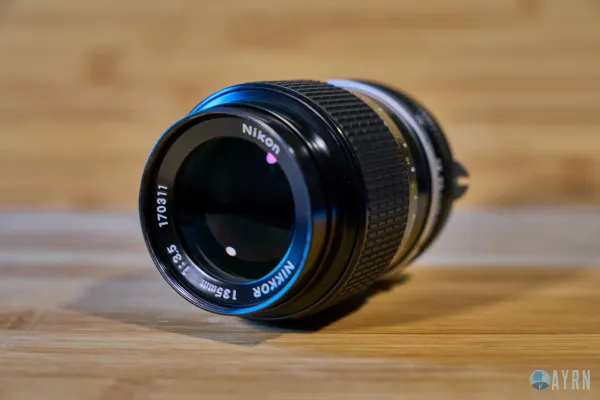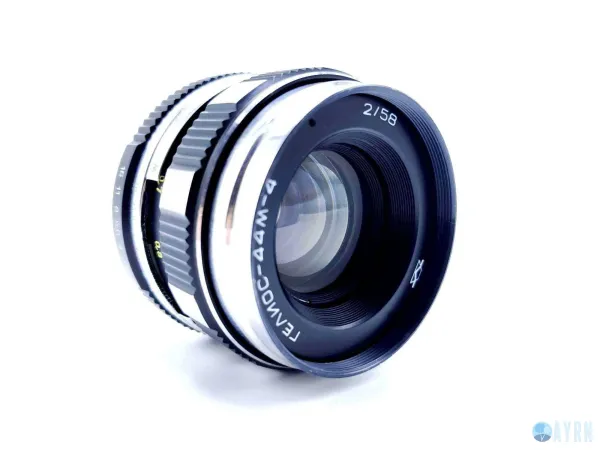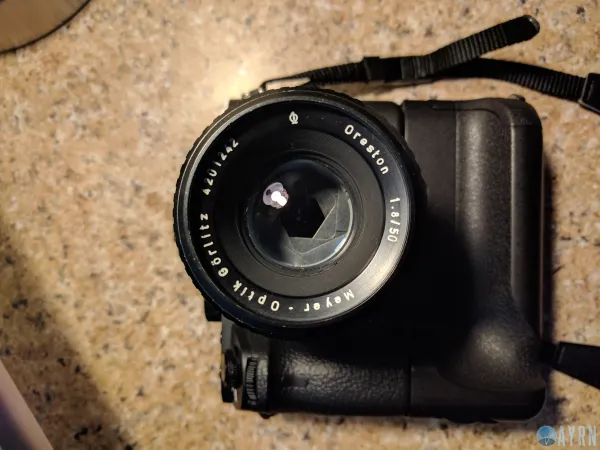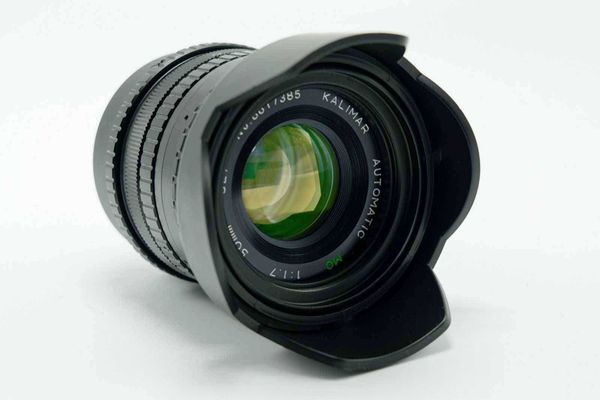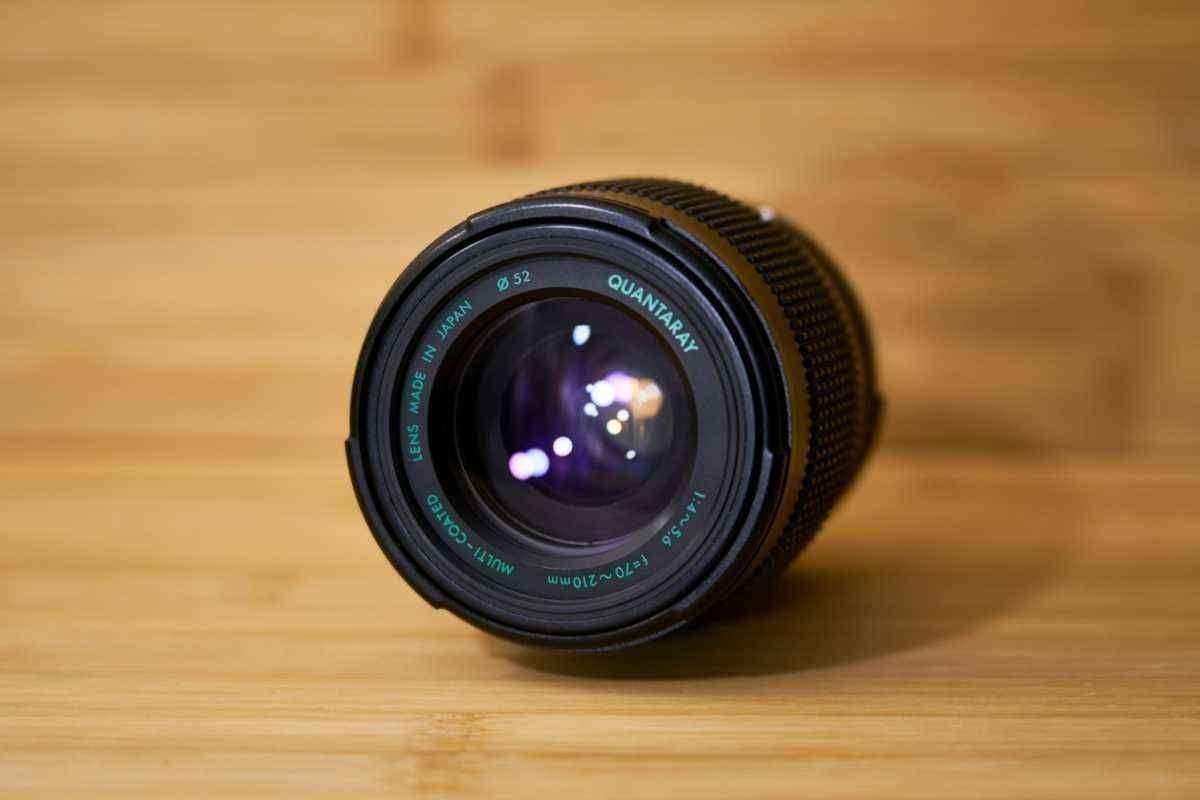
Quantaray 70-210mm f/4-5.6 Macro
At a glance: Capture every detail from afar with the Quantaray 70-210mm f/4-5.6 macro zoom lens. Versatile and affordable, it's perfect for wildlife, sports, and close-up photography.
- Wide zoom range for versatile shooting.
- Ideal for capturing distant subjects with ease.
- Built-in macro mode for close-up photography.
- Lightweight design, easy to carry.
- Affordable option for hobbyists and beginners.
- Compatible with a variety of camera systems.
- Smooth zoom action for quick adjustments.
First Impressions
One of the first things I noticed when unboxing the Quantaray 70-210mm f/4-5.6 Macro One Touch Zoom was its no-nonsense design. The lens has a straightforward, almost utilitarian look that feels right at home on both film and digital SLRs. It’s a lens that doesn’t try to stand out but rather promises to get the job done without much fuss. The build is mostly plastic, but it feels decently solid in hand, and the one-touch zoom mechanism is something you don’t see often anymore.
The compactness of the lens was another pleasant surprise. For a telephoto zoom that stretches out to 210mm, it’s relatively lightweight and easy to carry around, making it an ideal choice for photographers who need something portable for a day out shooting. The lens barrel extends smoothly as you zoom, and the integrated macro mode adds an extra layer of versatility to this budget-friendly option.
Specifications
| Specification | Details |
|---|---|
| Model | Quantaray 70-210mm f/4-5.6 |
| Type | Telephoto Zoom |
| Focal length | 70-210mm |
| Focal format | Full-frame |
| Magnification | 0.25x (in Macro Mode) |
| Max aperture | f/4 at 70mm, f/5.6 at 210mm |
| Min aperture | f/22 |
| Aperture Blades | 6 |
| Angle of view | 34° - 11° |
| Optical formula | 13 Elements in 9 Groups |
| Minimum focal dist. | 1.5m (4,8ft) |
| Filter thread size | 52mm |
| Lens hood | Optional |
| Mount type | Varies (Canon EF, Nikon F, etc.) |
Features
| Feature | Details |
|---|---|
| Zoom ring | One-touch zoom/focus |
| Focus ring | Integrated with zoom |
| Autofocus | Yes |
| Focus motor | Screw drive |
| Image stabilization | No |
| Optical coating(s) | Yes - Multi-coated |
| Macro mode | Yes, at 210mm |
| Front element rotation | Yes (affects polarizers) |
| Internal focusing | No |
| Lens extension while focusing | Yes |
| Aperture ring | No (controlled via camera body) |
| De-clickable aperture | No |
| Architecture | SLR |
Image Quality
When it comes to image quality, the Quantaray 70-210mm f/4-5.6 Macro One Touch Zoom delivers a performance that’s a mixed bag, but still impressive for its price point. At the wide end of the zoom range (70mm), the lens produces sharp and well-contrasted images, especially when stopped down to f/5.6 or f/8. The center sharpness is decent, though the corners can be a bit soft, particularly at the wider apertures.
As you zoom towards 210mm, the sharpness drops off slightly, and some chromatic aberration starts to creep in, especially in high-contrast situations. However, the overall image quality remains usable, particularly for casual shooting or when you don’t need to pixel-peep. The lens’s colors are generally accurate, though they can be slightly muted, which might require some adjustment in post-processing.
The macro mode, accessible at the 210mm end of the zoom, is a fun addition. It allows you to get surprisingly close to your subject, with a maximum magnification of around 0.25x. While not true 1:1 macro, it’s still a useful feature for shooting flowers, insects, or small objects, and it adds an extra layer of versatility to this budget telephoto zoom.
Sharpness
Sharpness on the Quantaray 70-210mm f/4-5.6 is serviceable but not spectacular, which is typical for a lens in this price range. At 70mm, the lens delivers decent sharpness in the center of the frame, with a noticeable drop-off towards the edges, especially at wider apertures. Stopping down to f/8 improves sharpness across the frame, making it more suitable for landscapes or detailed subjects.
At 210mm, the sharpness diminishes slightly, particularly at the edges. However, for casual shooting, especially for portraits or nature shots where edge sharpness isn’t critical, the lens performs well enough. The lens is certainly not going to satisfy the most demanding photographers looking for razor-sharp images, but for its intended audience, it gets the job done.
Bokeh
The bokeh produced by the Quantaray 70-210mm f/4-5.6 is decent, though not exceptional. The 6-blade aperture design means that out-of-focus highlights tend to take on a hexagonal shape, particularly when stopped down. However, at wider apertures, the bokeh is reasonably smooth, with a pleasing background blur that helps to isolate your subject from its surroundings.
The bokeh quality is most noticeable at the telephoto end (around 210mm), where the longer focal length naturally compresses the background. While it doesn’t produce the creamy, dreamy bokeh of more expensive lenses, it’s good enough for portraiture or casual macro work.
Build Quality
Build quality on the Quantaray 70-210mm f/4-5.6 Macro One Touch Zoom is what you’d expect from a budget lens—functional but not fancy. The lens barrel is mostly plastic, which helps keep the weight down but doesn’t inspire the same confidence as a metal-bodied lens. That said, it feels solid enough for everyday use, and the one-touch zoom mechanism is smooth, making it easy to quickly frame your shots.
The integrated zoom and focus ring takes some getting used to, particularly if you’re more accustomed to separate rings for zoom and focus. The front element rotates during focusing, which can be a bit of a nuisance when using polarizing filters. There’s no weather sealing, so you’ll need to be cautious in adverse conditions, but for the price, it’s hard to complain.
Manual Focus Performance
Manual focusing with the Quantaray 70-210mm f/4-5.6 is a bit of a mixed experience. The one-touch zoom and focus ring, while convenient for quick adjustments, can be tricky to use precisely, especially when trying to fine-tune your focus. The focus throw is relatively short, which can make it difficult to achieve critical focus, particularly at longer focal lengths or in macro mode.
For those who prefer to rely on autofocus, the lens’s screw-drive autofocus system is reasonably quick and accurate, though it’s not the quietest. It’s sufficient for most general photography needs but might struggle in low-light conditions or when trying to focus on fast-moving subjects.
Feature Breakdown
The Quantaray 70-210mm f/4-5.6 Macro One Touch Zoom is a straightforward, no-frills lens, but it offers a few features that make it more versatile than your average budget telephoto zoom. The one-touch zoom/focus mechanism is unique and convenient for quickly changing your composition or focus point. The built-in macro mode at 210mm adds some creative possibilities, even if it’s not true macro photography.
While the lens lacks modern conveniences like image stabilization or advanced coatings, it’s still a capable performer for everyday photography. The lens’s compact size and relatively light weight make it an excellent option for travel or for photographers who prefer to keep their gear light.
Optical Construction
The optical design of the Quantaray 70-210mm f/4-5.6 is fairly typical for a lens of its class, featuring 13 elements in 9 groups. The multi-coated optics help to reduce flare and ghosting, though they’re not as advanced as those found in more expensive lenses. The lens performs best when stopped down a bit, which helps to improve sharpness and contrast across the frame.
While the lens isn’t designed for high-end optical performance, it does offer a good balance of versatility and affordability. The macro mode is a nice touch, and the overall image quality is perfectly acceptable for casual photography or for those just starting to explore the world of telephoto lenses.
What Could Be Better
The Quantaray 70-210mm f/4-5.6 Macro One Touch Zoom has its limitations, as you might expect from a budget lens. The lack of image stabilization is a noticeable omission, particularly when shooting at longer focal lengths, where camera shake can become an issue. The rotating front element during focusing is another minor annoyance, especially if you frequently use polarizers.
The lens’s build quality, while decent, isn’t as robust as more expensive options, and the all-plastic construction might not hold up as well under heavy use. The manual focus performance, while adequate, can be a bit challenging, especially if you’re trying to achieve precise focus in macro mode or at the longer end of the zoom range.
Finally, the image quality, while decent for casual use, isn’t going to satisfy photographers looking for top-tier sharpness and contrast. The lens is best suited for those who need a budget-friendly telephoto zoom and are willing to accept some compromises in exchange for affordability and versatility.
Conclusion
The Quantaray 70-210mm f/4-5.6 Macro One Touch Zoom is a lens that offers a lot of versatility.
Quantaray 70-210mm f/4-5.6 Macro (Images of)
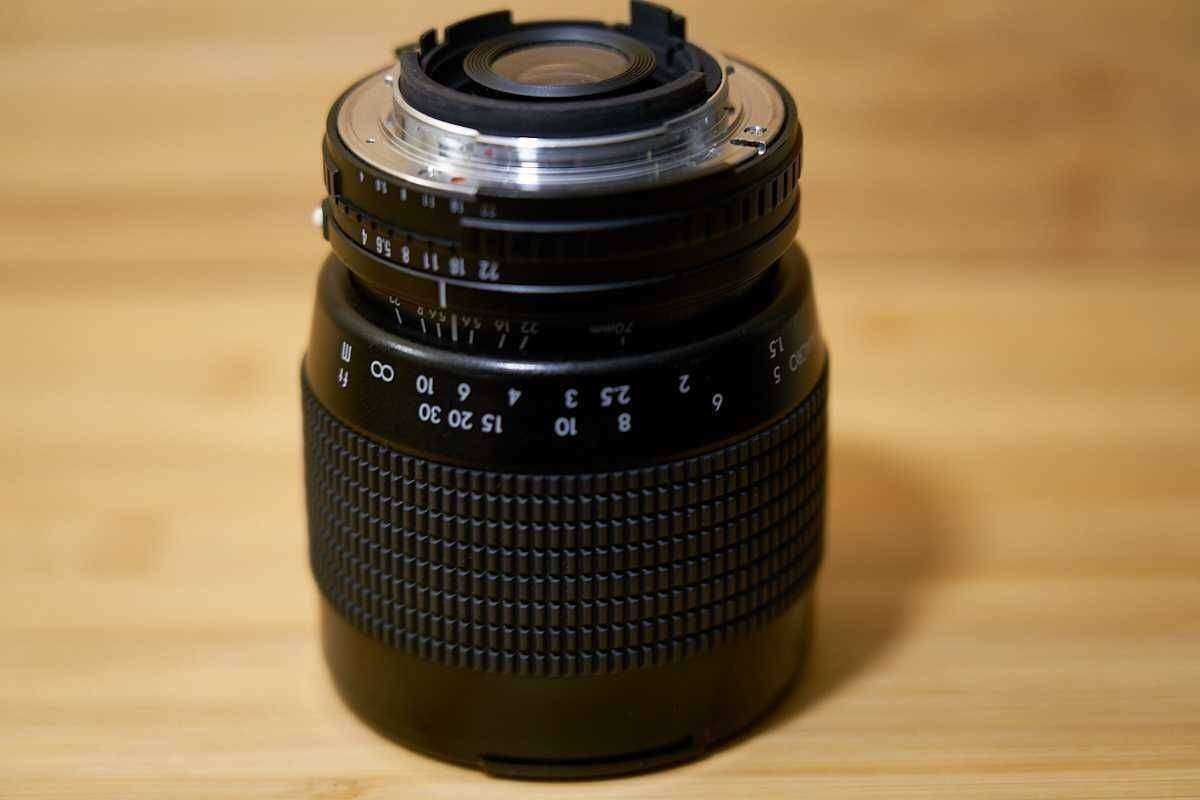
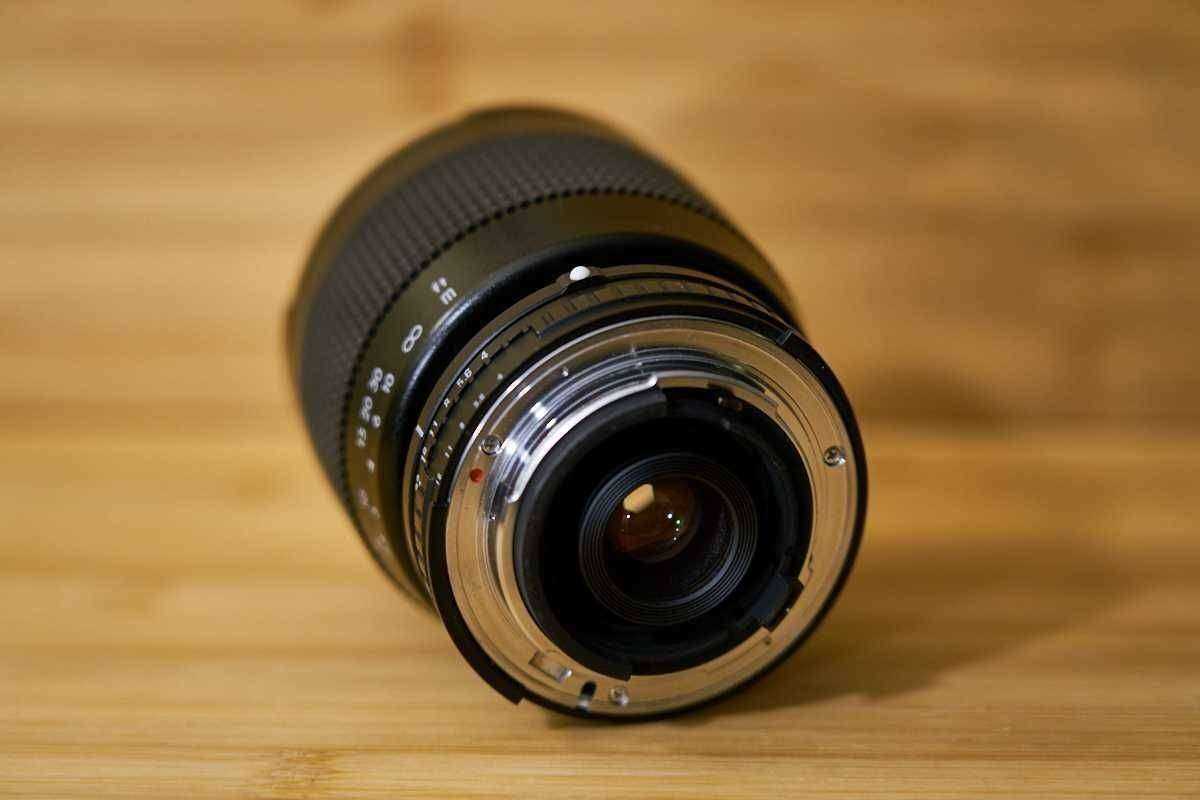
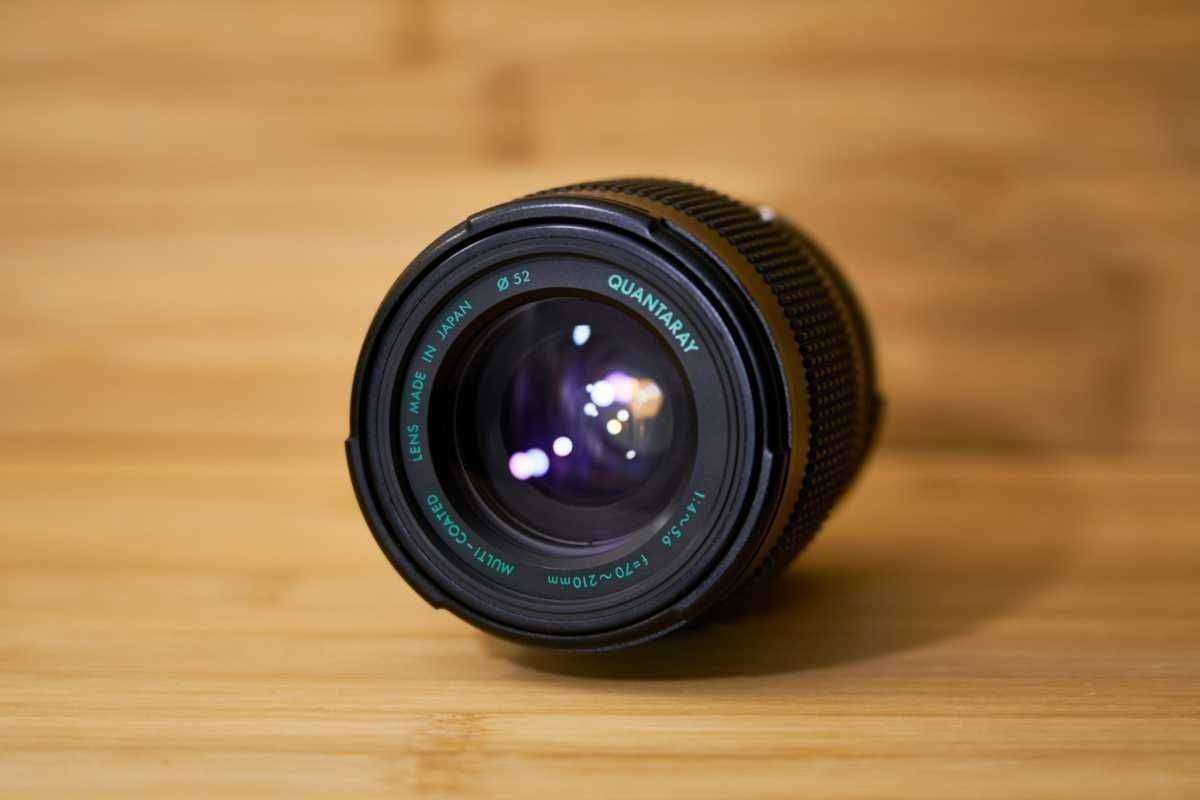
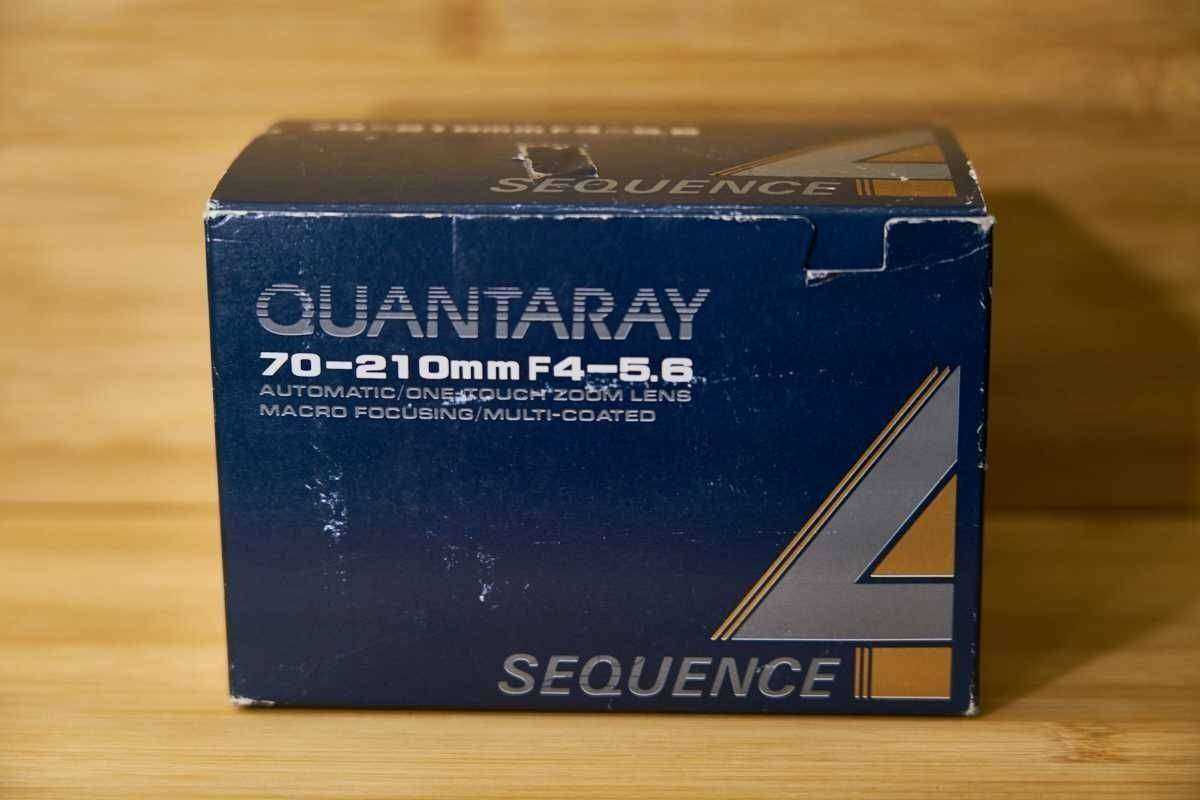
Product Images of the Quantaray 70-210mm f/4-5.6 Macro
From the original manual (in case anyone needs it):
To Mount Lens
This Quantaray automatic lens attaches to your camera and will function automatically in the same manner as any normal lens.
One-touch zoom function
The 70-210 mm lens can be simultaneously focused and zoomed with one control simply by sliding the Zoom Focus Ring along the length of the lens barrel while, at the same time, rotating the ring to bring the subject into sharp focus. For extra ease in focusing, focus with the Zoom, Focus ring adjusted to the maximum telephoto focal length (210mm) and then zoom to the desired position. Once sharply focused as above, the lens remains in focus at every focal length.
Macro function
This lens focuses from infinity continuously to a minimum focusing distance of 1.5m (4,8ft).
The engraved magnification on the barrel is based on the longest focal length scale (210mm) Also shooting are available at an other focal length. however the magnification will be less
Infrared photography
When using black and white infrared film, compensation is necessary because of an unseen focus shift in the infrared spectrum. To compensate for this shift, focus normally and check the subject to camera distance shown by the white index line. Then rotate the zoom/focus ring until it is aligned with the infrared distance line marked “R”. Compensation is not required when using color infrared film.


